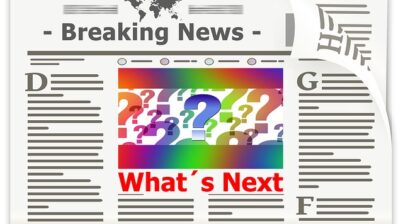HR leaders know their data analytics provide important insights into their companies, yet over and over they tell us their greatest need is to “speak better CFO.” In other words, they need to be able to tell a data-driven, metrics-driven, cost-driven story of the workforce.
Numbers alone don’t really mean much. Analytics, on the other hand, is the process of explaining why the numbers are what they are and what you can do to change them. In The Harvard Business Review, Jim Stikeleather says that “Stories package information into a structure that is easily remembered, which is important in many collaborative scenarios when an analyst is not the same person as the one who makes decisions.” He continues, saying, “Storytelling helps the viewer gain insight from the data…. The goal is to enable the viewer to observe, understand and make sense of the information.”
But how do you tell a great story with data that will engage your CFO? Below are 5 tips to help you transform your HR dashboard into the HR “Source of Truth,” putting you and your CFO on the same page in real-time.
- Know your data. You can’t tell a story if you don’t know what the story is. Thankfully, your HR dashboard puts your most important data in one place where you can easily search for notable changes. But the most important question when you talk to your CFO is how your people data relates to your company’s finances. Dimple Lalwani, Co-founder and CEO of Talking Circles, suggests that “The unsolved area within people analytics today includes fully linking this data with business performance. Many people still consider HR to be a ‘fluffy’ function and sometimes these thoughts come from within the company itself.” Your story will need to work against this bias and show a clear connection between HR data and profits and savings, so keep this in mind as you analyze your data.
- Know your audience. Your CFO’s priorities will not be the same as yours. Think about what is relevant and valuable to your CFO and make that the focus of your data-driven story. In general, CFOs have two main concerns: “How much will it cost?” and “How will it earn or save money?”
Purdue University says that many CFOs focus on “five key financial performance areas: profitability, capital structure and debt service, size and growth, risk and financial documentation, and creating shareholder or owner value.” Connecting your HR data to these concerns will help you speak better CFO more effectively. - Choose the right visualization. Visual representations of data are much easier to process than a list of numbers or a page of text. Effective visuals can communicate a lot of information very quickly, which makes them a perfect way to talk to CFOs who are crunched for time. James Richardson, Senior Director Analyst at Gartner, explains, “Data and analytics storytellers must choose a fitting visualization based on the kind of data they want to present and the audience to which they want to present it.”
The right visualization will be easy to read and focus on a limited number of data points. One of the great benefits of a good HR dashboard is that much of this visualization can be done automatically. In the case of your CFO, these data points should prioritize the connection between HR’s work and your CFO’s major concerns. - Put data points in context. Connect your data to your company’s finances. You can do this by linking your data to your company’s financial goals or KPIs. You can also emphasize costs or savings over time, or projected profits, losses, or savings. While you focus on people, your CFO focuses on money, so it’s essential for you to reveal how the two are inextricably linked.
- Make projections. Data stories are ultimately about action. They should answer important questions and provide guidance for future decisions. As Richardson puts it, “Never forget that the goal of data storytelling is to encourage and energize critical thinking for business decisions.” The conclusion of your data story should present your CFO with a clear path forward.
Employee Cycles provides a powerful HR analytics dashboard to bring all your people metrics into one place. Offering pre-built integration with the major HR systems on today’s market, as well as stunning visualizations, this dashboard has the tools to impress anyone–including your CFO. Click to schedule a demo and learn more.












